Reasonable Support Technology of Full-Stress Anchoring Technology of Advance Roadway: A Case Study
Abstract
:1. Introduction
2. Engineering Status of the 1304 Working Face Study Area
2.1. Lithology of the Roadway Roof and Floor
2.2. Roadway Layout
2.3. Original Support Scheme and Effect
2.3.1. Original Support Scheme
2.3.2. Effect and Analysis of Original Support
- (1)
- The single hydraulic prop cannot achieve effective support of the roof.
- (2)
- The anchoring force of the bolt on the roadway roof support is insufficient.
3. Numerical Simulation Study on the Supporting Effect of the Single Hydraulic Prop in the Original Scheme
3.1. Establish the Geological Model of Mining Roadway in Working Panel
- (1)
- The surrounding rock of the mining roadway is all isotropic, homogeneous, and continuous.
- (2)
- The surrounding rock of the mining roadway has a completely elastic-plastic body, and the mechanical properties meet the Mohr–Coulomb criterion.
- (3)
- The influence of time on the properties of the model is not considered in this simulation.
- (1)
- Creating blocks
- (2)
- Boundary constraint
- (1)
- The upper boundary of the model is a free boundary condition, which is subjected to a uniform load on the surface. The uniform load is the self-weight stress of the overlying strata, that is, 18.33 MPa, and the horizontal boundary is subjected to horizontal stress, that is, 27.5 MPa.
- (2)
- The lower boundary of the model is a displacement constraint condition, even if there is no displacement in the vertical direction.
- (3)
- The horizontal displacement of the front and rear, left and right surfaces of the model is limited to 0, but the vertical direction is not limited; that is, the vertical direction can be displaced after the force is applied.
3.2. Single Hydraulic Prop Advance Support Simulation Scheme
- (1)
- Simulation scheme description
- (2)
- Structural unit description of simulated supporting materials
- (3)
- Supporting material parameter table
- (4)
- Bolt mesh cable support model of mining roadway
- (5)
- The single hydraulic prop support model
- (6)
- Measuring point arrangement
3.3. Simulation Results and Analysis
3.3.1. Data Analysis of Roadway Surface Monitoring Points
3.3.2. Analysis of the Cloud Map
4. Full-Stress Anchoring Technology of Bolts in the Coal Roadway
4.1. Principle of Full-Stress Anchoring Support Technology
- (1)
- Increase the pre-tightening force of the bolt and select the appropriate bolt length according to the strength of the surrounding rock. Increasing the initial pre-tightening force of the bolt will increase the stress value of the pre-tightening force in the full-length range of the bolt anchorage, so that there is a higher stress distribution in the whole surrounding rock range of the bolt anchorage and the control effect on the surrounding rock of the roadway is enhanced. The selection of bolt length depends on the lithology of the surrounding rock, the development of cracks and joints, and the mechanical strength of the coal and rock mass. For the roadway with more developed fissures and joints, where the main body of the surrounding rock is soft rock and the shallow part of the surrounding rock is broken, it is necessary to increase the length of the bolt to anchor the bolt to the deep part of the surrounding rock to reduce the expansion and deformation of the surrounding rock from the inside to the outside.
- (2)
- In the process of bolt anchoring, synergistic use of quick-setting and retarding anchoring agents. Drilling the surrounding rock of the roadway and the depth of the hole should be matched with the length of the selected bolt. Generally, the depth of the hole is less than the length of the bolt by 100–150 mm. Cleaning the generated cuttings out of the borehole will avoid the influence of cuttings on the process of anchoring the surrounding rock. Firstly, place the quick-setting anchoring agent in the deepest part of the borehole, and then place the retarding anchoring agent with the lower setting rate in the borehole. The two anchoring agents are in close contact, and then the bolt is inserted and stirred. When the quick-setting anchoring agent is anchored and the retarding anchoring agent has not yet condensed, the pre-tightening force is applied to the bolt to realize the distribution of the pre-tightening force along the full length of the bolt, so that the surrounding rock within the full length of the bolt is subjected to effective compressive stress. The diameter of the quick-setting anchoring agent and the retarding anchoring agent should be consistent, and the quick-setting anchoring agent and the retarding anchoring agent with different diameters should not be used. In this way, after the two anchoring agents are stirred, the distribution of the anchoring agent is more consistent, which avoids the problem of uneven distribution of the anchoring agent and enhances the control effect of the bolt on the deformation of the surrounding rock and the separation layer.
- (3)
- Increase the total anchorage length of the bolt anchorage section and keep the total anchorage length to meet the requirements for lengthening the anchorage. The anchorage section of the full-stress anchorage of the bolt includes two parts: the quick-setting anchorage section and the retarding anchorage section, and the total anchorage length is the sum of the two. The total anchorage length is increased by increasing the amount of anchoring agent, and the amount of retarding anchoring agent should not be less than the amount of quick-setting anchoring agent. Using the different characteristics of the condensation rates of the two anchoring agents, the pre-tightening force is applied to the bolt within the setting time difference. While increasing the distribution range of anchoring stress, it also ensures the high-stress anchoring state of the bolt and improves the overall control strength of the bolt to the surrounding rock.
4.2. Full-Stress Bolt Anchoring Support Technology Scheme and Supporting Effect Analysis
- (1)
- Increase the length of the bolt; use a Φ20 × 2400 mm bolt, spacing 800 × 800 mm; lengthen the length of the anchor cable, using Φ17.8 × 7300 mm, spacing 1300 mm, row spacing 2400 mm, interval arrangement. The selection of anchor cable support length is related to the distribution of the plastic zone of the surrounding rock and the method of full-stress anchorage support. The anchor cable needs to be anchored into the hard and stable fine sandstone because the distribution range of the plastic zone of the fine sandstone surrounding rock is smaller than that of the medium sandstone, and the damage degree of the surrounding rock is low, which is beneficial to the suspension of the anchor cable. In addition, one CK2350 anchoring agent and two K2370 anchoring agents are used in the full-stress anchoring of the anchor cable. The theoretical anchoring length is 1900 mm, and the anchoring section should be all in fine sandstone, which is conducive to giving full play to the overall anchoring performance of the anchoring section and improving the full-stress anchoring support effect. Therefore, under the above conditions, the shortest length of anchor cable is, in theory, 6750 mm. In this case, the length of the anchor cable is increased, and the Φ17.8 × 7300 mm anchor cable is used. In addition to satisfying the full-stress anchorage condition, the anchorage section can be kept away from the interbedded positions of fine and medium sandstone, thus improving the shear resistance of the anchor cable.
- (2)
- Bolt pre-tightening force increased from 80 kN to 120 kN; anchor cable pre-tightening force increased from 92 kN to 130 kN.
- (3)
- Use quick-setting and retarding anchoring agents. The bolt is anchored by one CK2350 anchoring agent and one K2370 anchoring agent, and the anchor cable is anchored by one CK2350 and two K2370 anchoring agents.
4.3. Roadway Deformation Monitoring
5. Conclusions
- (1)
- Through FLAC3D finite difference software, two kinds of transportation roadway support models—single hydraulic prop advance support and simple bolt-mesh-cable support—are established. The two schemes are compared in four aspects: vertical stress, vertical displacement, horizontal displacement, and plastic zone distribution. Compared with the simple bolt-mesh-cable support, the tensile stress value of the roof and floor of the roadway is reduced from 0.3 MPa to 0.26 MPa, the roof-to-floor convergence is reduced from 538 mm to 288 mm, and the convergence of the two sides is reduced from 528 mm to 308 mm. The plastic zone above the roof of the roadway is reduced from 28.1 m long and 8.1 m high to 20.3 m long and 6 m high. The plastic zone on both sides of the roadway is reduced from 18.9 m to 10 m, and the height is reduced from 8 m to 5.9 m. The stress concentration and deformation of the roadway are reduced, and the distribution range of the plastic zone is smaller. This shows that the single hydraulic prop advanced support changes the stress and deformation state of the surrounding rock of the mining roadway to a certain extent and makes the roadway more stable.
- (2)
- The numerical simulation experiment is used to simulate and analyze the effect of full-stress anchoring advance support of bolts and single hydraulic prop advance support. From the numerical simulation analysis experiment, we determined that, compared with the single hydraulic prop advance support, the effect of full-stress anchoring advance support of bolts is as follows: The area of the maximum concentrated stress area is reduced by 7.1 times, the maximum convergence of the roadway roof and floor is reduced from 288 mm to 33 mm, and the maximum convergence of the left and right sides is reduced from 308 mm to 25 mm, and the height of the plastic zone of the roof is reduced from 6000 mm to 800 mm, the span of the plastic zone on both sides is reduced from 1800 mm to 600 mm, and the depth of the plastic zone of the floor is reduced from 4700 mm to 1000 mm. The effect of full-stress anchoring support technology is better than that of single hydraulic prop advance support, which greatly improves the control effect of the roadway surrounding rock.
- (3)
- The realization method of full-stress anchoring support of bolts is proposed: Increase the anchorage length of the bolt, increase the pre-tightening force of the bolt, and use the quick-setting anchoring agent and the retarding anchoring agent. The advanced support scheme for full-stress anchoring is formulated as follows: The length of the bolt is 2400 mm, the pre-tightening force is 120 kN, the spacing and row spacing are both 800 mm, and the anchoring agents are CK2350 and K2370. The length of anchor cable is 7300 mm, the spacing of anchor cable is 1500 mm, the row spacing is 2000 mm, the pre-tightening force is 150 kN, and one CK2350 and two K2370 anchoring agents are used for anchoring. In the industrial test, compared with the single hydraulic prop advance support, the roof-to-floor convergence of the roadway is reduced from 500 mm to 42 mm, and the control effect on the deformation of the roof and floor is increased by 1009%; the convergence of the two sides of the roadway is reduced from 300 mm to 69 mm, and the control effect on the deformation of the left and right sides is increased by 335%. The industrial test results show that the supporting effect of bolt full-stress anchoring advance support technology on the roadway surrounding rock is better than that of single hydraulic prop advance support technology.
- (4)
- The supporting effect of full-stress anchoring support technology on the surrounding rock of the mining roadway in the advanced section of the working panel is better than that of single hydraulic prop support technology. At the same time, the full-stress anchoring support has more advantages in economic benefits and production safety than the single hydraulic prop support. Therefore, it is reasonable to use the full-stress anchoring support technology to replace the original single hydraulic prop support technology, which can be used as the support technology of the mining roadway in the advance section of the working panel in coal mining. In future research, the failure factors and bearing capacity of full-stress anchoring support will be studied, and the whole process of full-stress anchoring of bolts will be monitored, from initial stress through anchorage service and anchorage failure. The influence of four different factors, such as anchorage length, bond strength, surrounding rock strength, and bolt strength, on the distribution effect of full-stress anchoring stress of the bolts is obtained so as to further improve the effect of full-stress anchoring support.
Author Contributions
Funding
Institutional Review Board Statement
Informed Consent Statement
Data Availability Statement
Conflicts of Interest
References
- Xu, P.F. Characteristics and occurrence regularity of coal mine accidents in China from 2020 to 2021. Coal Eng. 2022, 54, 129–133. [Google Scholar]
- Zhang, P.S.; Li, F.X.; Zhu, H.C.; Niu, H.; Li, X.H. Statistical analysis and prevention countermeasures of coal mine accidents from 2008 to 2020. Min. Saf. Environ. Prot. 2022, 49, 128–134. [Google Scholar]
- Meng, Y.; Xie, D.H.; Su, B.; Gu, A.X. Statistics and analysis of coal mine production safety accidents in China from 2010 to 2019. Miner. Eng. Res. 2020, 35, 27–33. [Google Scholar]
- National Mine Safety Administration, National Mine Safety Production Accidents in 2022. Available online: https://www.chinamine-safety.gov.cn/zfxxgk/fdzdgknr/sgcc/sgtb/202302/t20230215_442433.shtml (accessed on 15 February 2023).
- Ren, H.; Zhu, Y.J.; Peng, X.Y.; Li, Y. Numerical simulation of reasonable position layout of lower coal mining roadway under short-distance thin coal seam. Min. Res. Dev. 2023, 43, 8–13. [Google Scholar]
- Yuan, S.; Liu, J.Y. Study on reasonable pillar width of mining roadway under district pillar in overlying section. Coal Eng. 2022, 54, 1–5. [Google Scholar]
- Miao, Y.P.; Cheng, L.X.; Zheng, X.H.; Chen, X.S.; Wang, Z.L.; Xu, B.J. Study on dynamic response characteristics of mining stress in shallow deep mining roadway. J. Min. Strata Control Eng. 2022, 4, 60–68. [Google Scholar]
- He, F.; Li, L.; Lv, K.; Qin, B.; Xu, X.; Ma, Q.; Chen, Y. Study on evolution of front abutment pressure at working face in repeated mining of close-distance coal seams. Sustainability 2022, 14, 12399. [Google Scholar] [CrossRef]
- Qin, H.Y.; Cheng, Z.H.; Ouyang, Z.H.; Zhao, X.D.; Feng, J.C. Relationship between advancing abutment pressure and deformation of surrounding rock in a roadway: A case study in Helin coal mine in China. Environ. Earth Sci. 2021, 80, 763. [Google Scholar] [CrossRef]
- Fu, Q.; Yang, K.; He, X.; Liu, Q.; Wei, Z.; Wang, Y. Destabilization mechanism and stability control of the surrounding rock in stope mining roadways below remaining coal pillars: A case study in Buertai coal mine. Processes 2022, 10, 2192. [Google Scholar] [CrossRef]
- Tan, Y.L.; Liu, X.S.; Ning, J.G.; Tian, C.L. Front abutment pressure concentration forecast by monitoring cable-forces in the roof. Int. J. Rock Mech. Min. Sci. 2015, 77, 202–207. [Google Scholar] [CrossRef]
- Jin, Z.; Xu, Y.; Peng, T.; Gao, L. Roof control technology of mining roadway under the influence of advanced supporting pressure. Adv. Civ. Eng. 2021, 2021, 2049755. [Google Scholar] [CrossRef]
- Liu, H.; Jiang, Z.H.; Chen, W.S.; Chen, F.; Ma, F.L.; Li, D.H.; Liu, Z.Y.; Gao, H.K. A simulation experimental study on the advance support mechanism of a roadway used with the longwall coal mining method. Energies 2022, 15, 1366. [Google Scholar] [CrossRef]
- Xue, G.; Cheng, J.; Guan, J.; Chai, J.; Zhang, G.; Hao, X.; Wu, M. The method for determining working resistance of advance support bracket in deep fully mechanized roadway based on Flac3D. Adv. Mech. Eng. 2018, 10, 1–10. [Google Scholar] [CrossRef]
- Su, W.; Zheng, B.; Jiang, P. Study on anchor cable instead of single hydraulic prop support in advance support of deep roadway. Adv. Civ. Eng. 2021, 2021, 6644832. [Google Scholar] [CrossRef]
- Jiao, X.J.; Du, F.; Wang, L.J.; Wang, W.Q. Cooperative control technology of advanced active support in fully mechanized caving face of gently inclined thick coal seam. Coal Technol. 2022, 41, 22–27. [Google Scholar]
- Chen, J.G.; Tang, J.Q.; Zhuo, J. Research and application of horizontal end and advanced hydraulic support in fully mechanized mining face. Coal Technol. 2022, 41, 212–215. [Google Scholar]
- Du, W.J. Application of over-advance support in the over-advance support of the return roadway of the isolated working face. Mech. Manag. Dev. 2021, 36, 169–170. [Google Scholar]
- Chen, Y.L.; Zhang, Z.M.; Wang, H.B. Research on non equal strength support technology and automatic control device of hydraulic support in advance support. Shandong Coal Sci. Technol. 2021, 39, 123–125. [Google Scholar]
- Liu, J. Development and application analysis of advanced support hydraulic support. Coal Mine Mach. 2019, 40, 132–133. [Google Scholar]
- Wang, Q. Application of roadway advanced hydraulic support in fully mechanized coal mining. Coal Mine Mach. 2017, 22, 30–31. [Google Scholar]
- Liu, X.H. Advance support technology of gob side entry without support in coal mining face. Coal Eng. 2017, 49, 38–40. [Google Scholar]
- Kang, H.P. Development and prospects of support and reinforcement materials for coal mine roadways. Coal Sci. Technol. 2021, 49, 1–11. [Google Scholar]
- Chen, F.; Wang, X.-B.; Wang, J.-G. Research on the propagation law of stress wave in rock mass supported by bolt under dynamic load. Geofluids 2022, 2022, 6022757. [Google Scholar] [CrossRef]
- Cao, F.; Fang, T. Application and analysis of bolt support in mine driving roadway. Math. Probl. Eng. 2022, 2022, 2521555. [Google Scholar] [CrossRef]
- Zakharov, V.N.; Trofimov, V.A.; Filippov, Y.A. Numerical modeling of rock bolt support in case of rheological behavior of rock mass in deformation. J. Min. Sci. 2021, 57, 883–893. [Google Scholar] [CrossRef]
- Chen, J.; Liu, P.; Zhao, H.; Zhang, C.; Zhang, J. Analytical studying the axial performance of fully encapsulated rock bolts. Eng. Fail. Anal. 2021, 128, 105580. [Google Scholar] [CrossRef]
- Yuan, Y.; Tu, S.H.; Zhang, X.G.; Li, B. Dynamic effect and control of key strata break of immediate roof in fully mechanized mining with large mining height. Shock Vib. 2015, 2015, 657818. [Google Scholar]
- Wang, S.; Xiang, Z.; Deng, J.; Yang, H.; Yang, X.; Jin, S. Analysis of cooperative control effect of pressure relief and long bolt support for deep roadway under strong mining disturbance of adjacent working face. Geotech. Geol. Eng. 2021, 39, 2259–2268. [Google Scholar] [CrossRef]
- Skrzypkowski, K. Case studies of rock bolt support loads and rock mass monitoring for the room and pillar method in the legnica-glogow copper district in Poland. Energies 2020, 13, 2998. [Google Scholar] [CrossRef]
- Skrzypkowski, K.; Korzeniowski, W.; Zagórski, K.; Zagórska, A. Modified rock bolt support for mining method with controlled roof bending. Energies 2020, 13, 1868. [Google Scholar] [CrossRef] [Green Version]
- Wang, Y.; Yuan, C.; Shi, X.; Chang, Q.; Zhang, B. Study on dynamic failure characteristics of coal and rock in stope induced by dynamic load of steep horizontal sublevel mining. Processes 2022, 10, 1684. [Google Scholar] [CrossRef]
- Kang, H.; Yang, J.; Gao, F.; Li, J. Experimental study on the mechanical behavior of rock bolts subjected to complex static and dynamic loads. Rock Mech. Rock Eng. 2020, 53, 4993–5004. [Google Scholar] [CrossRef]
- Kang, H. Support technologies for deep and complex roadways in underground coal mines: A review. Int. J. Coal Sci. Technol. 2014, 1, 261–277. [Google Scholar] [CrossRef] [Green Version]
- Hou, C.; Wang, X.; Bai, J.; Meng, N.; Wu, W. Basic theory and technology study of stability control for surrounding rock in deep roadway. J. China Univ. Min. Technol. 2021, 50, 1–12. [Google Scholar]
- Zhang, N.; Han, C.L.; Xie, Z.Z. Theory of continuous beam control and high efficiency supporting technology in coal roadway. J. Min. Strata Control Eng. 2019, 1, 48–55. [Google Scholar]
- Krykovskyi, O.; Krykovska, V.; Skipochka, S. Interaction of rock-bolt supports while weak rock reinforcing by means of injection rock bolts. Min. Miner. Depos. 2021, 15, 8–14. [Google Scholar] [CrossRef]
- Rehman, Z.U.; Hussain, S.; Tahir, M.; Sherin, S.; Mohammad, N.; Dasti, N.; Raza, S.; Salman, M. Numerical modelling for geotechnical assessment of rock mass behaviour and performance of support system for diversion tunnels using optimized Hoek-Brown parameters. Min. Miner. Depos. 2022, 16, 1–8. [Google Scholar] [CrossRef]
- Ghazdali, O.; Moustadraf, J.; Tagma, T.; Alabjah, B.; Amraoui, F. Study and evaluation of the stability of underground mining method used in shallow-dip vein deposits hosted in poor quality rock. Min. Miner. Depos. 2021, 15, 31–38. [Google Scholar] [CrossRef]
- Yin, Y.; Zhao, T.; Tan, Y.; Zhang, Z. Research of stress distribution evolution law and influencing factors. J. Min. Saf. Eng. 2013, 30, 712–716. [Google Scholar]
- Zheng, X.; Zhang, N.; Xue, F. Study on stress distribution law in anchoring section of prestressed bolt. J. Min. Saf. Eng. 2012, 29, 365–370. [Google Scholar]
- Zheng, X.; Zhang, L.; Zhang, N.; Liu, N. Pre-stressed anchorage function and evolution in the roof of rectangular roadway in deep mine. J. China Univ. Min. Technol. 2013, 42, 929–934. [Google Scholar]
- Zheng, X.; Liu, N.; Zhang, N.; Hua, J.; Feng, X. Floor heave mechanism and control technology of flexural and folded deep mine roadway. J. China Coal Soc. 2014, 39, 417–423. [Google Scholar]
- Wang, H.; Wang, Q.; Wang, F.; Li, S.; Wang, D.; Ren, Y.; Guo, N.; Zhang, S. Mechanical effect analysis of bolts in roadway under different anchoring lengths and its application. J. China Coal Soc. 2015, 40, 509–515. [Google Scholar]
- Zhao, T.; Xing, M.; Guo, W.; Wang, C.; Wang, B. Anchoring effect and energy-absorbing support mechanism of large deformation bolt. J. Cent. South Univ. 2021, 28, 572–581. [Google Scholar] [CrossRef]
- Li, H.Z.; He, X.; Long, L.Q.; Fan, D.P. Experimental on the influence of different constraint conditions on the bearing characteristics of rock bolt. J. Min. Strata Control Eng. 2022, 4, 28–37. [Google Scholar]
- Li, H.Z.; Li, X.; Chong, Z.; Long, J. Experimental research on slippage mode and analysis on mechanical properties of coal rock anchorage system. J. Min. Saf. Eng. 2017, 34, 1088–1093. [Google Scholar]
- Li, H.Z.; Li, X. Determination of rational anchorage length of bolt based on slip-debonding failure mode of interface. Rock Soil Mech. 2017, 38, 3106–3112. [Google Scholar]
- Guo, X.; Zheng, X.; Li, P.; Lian, R.; Liu, C.; Shahani, N.M.; Wang, C.; Li, B.; Xu, W.; Lai, G. Full-stress anchoring technology and application of bolts in the coal roadway. Energies 2021, 14, 7475. [Google Scholar] [CrossRef]

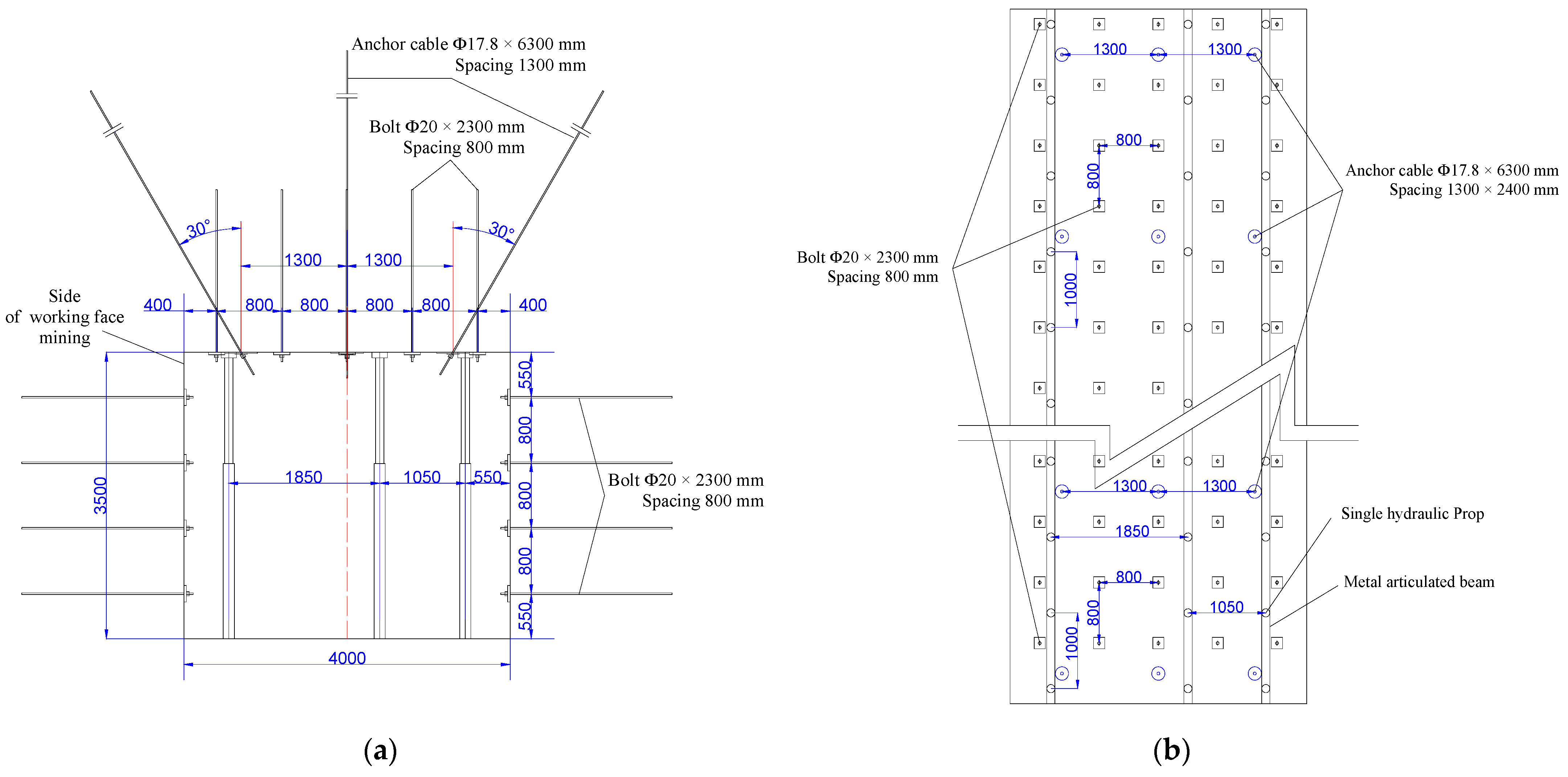
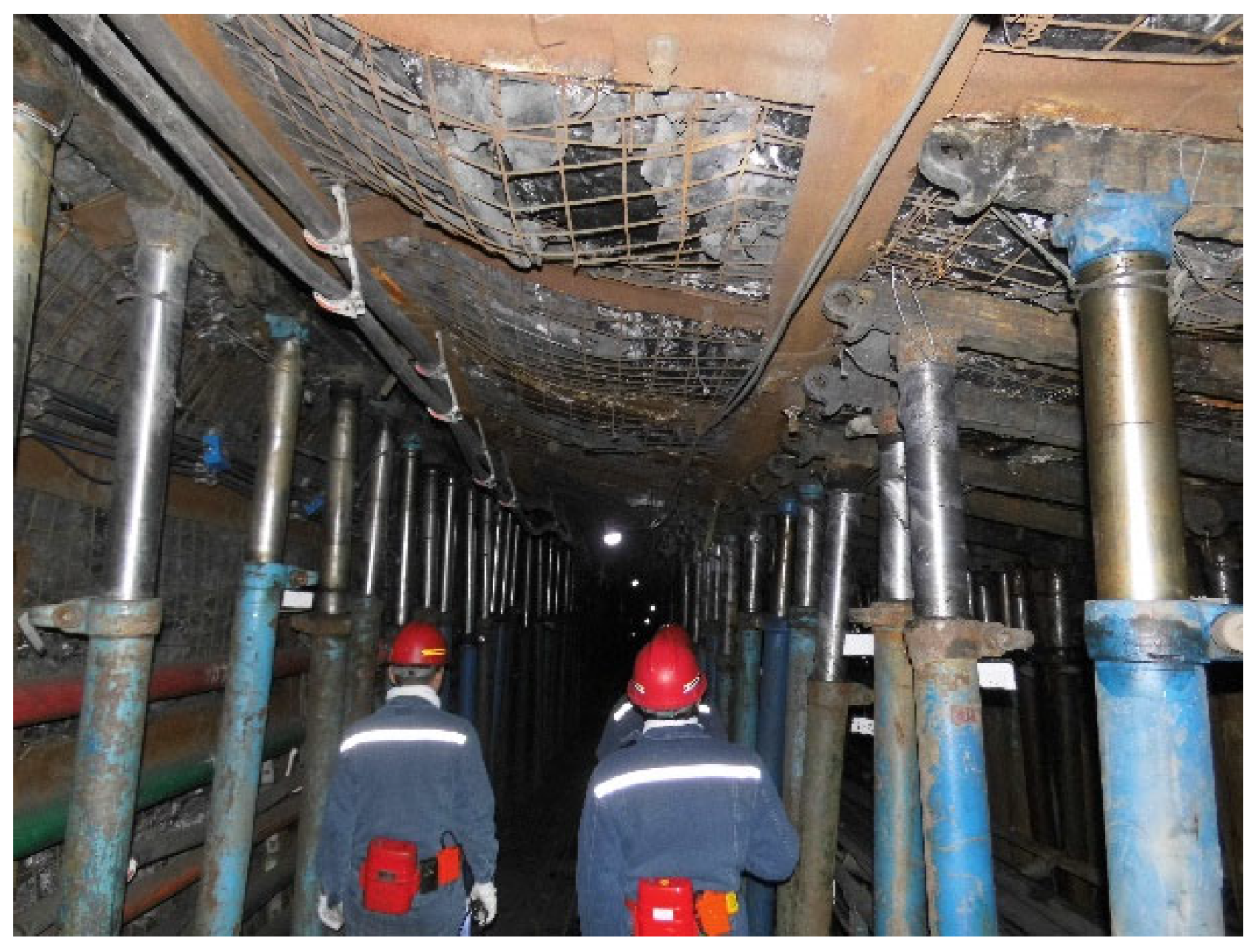

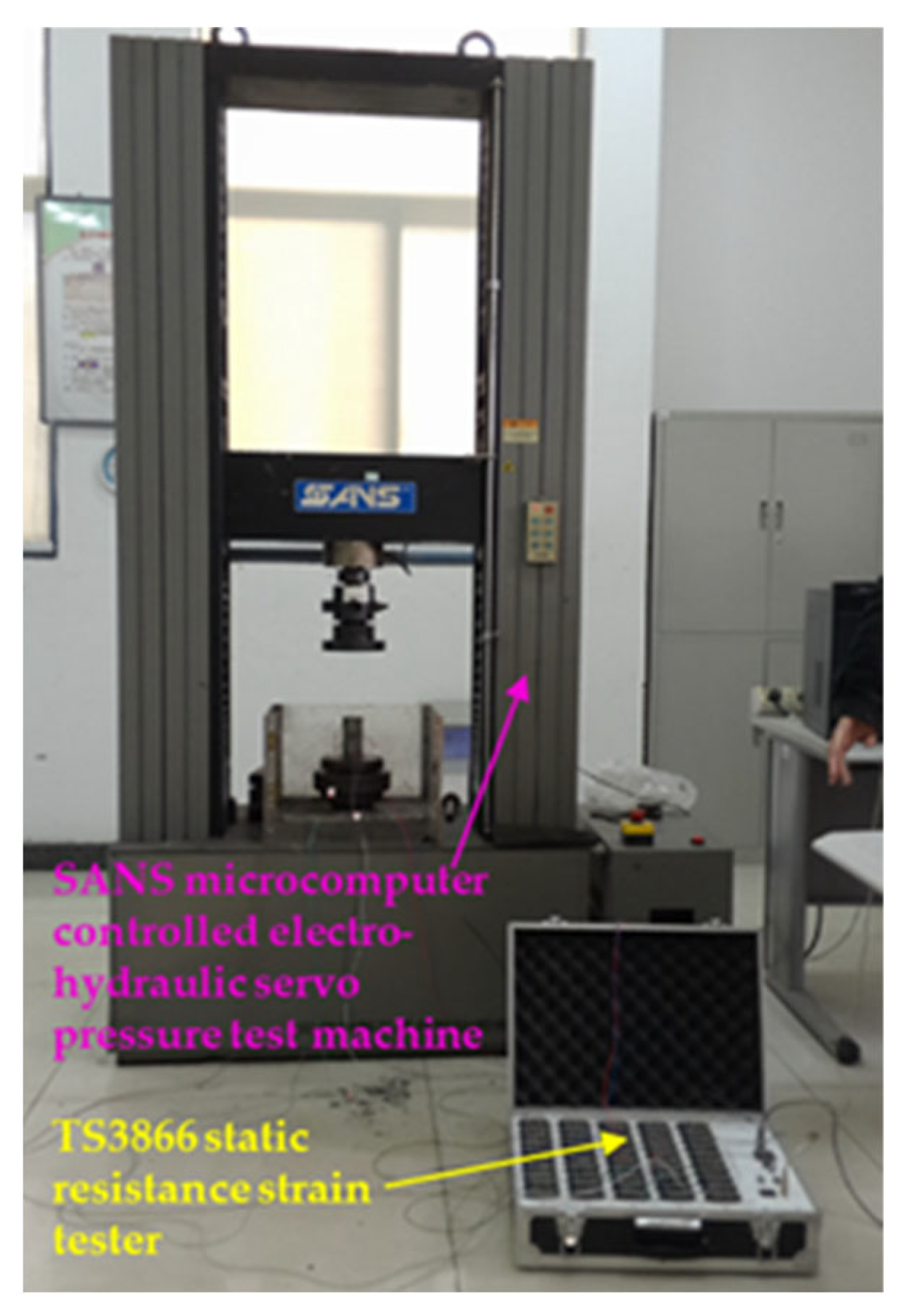


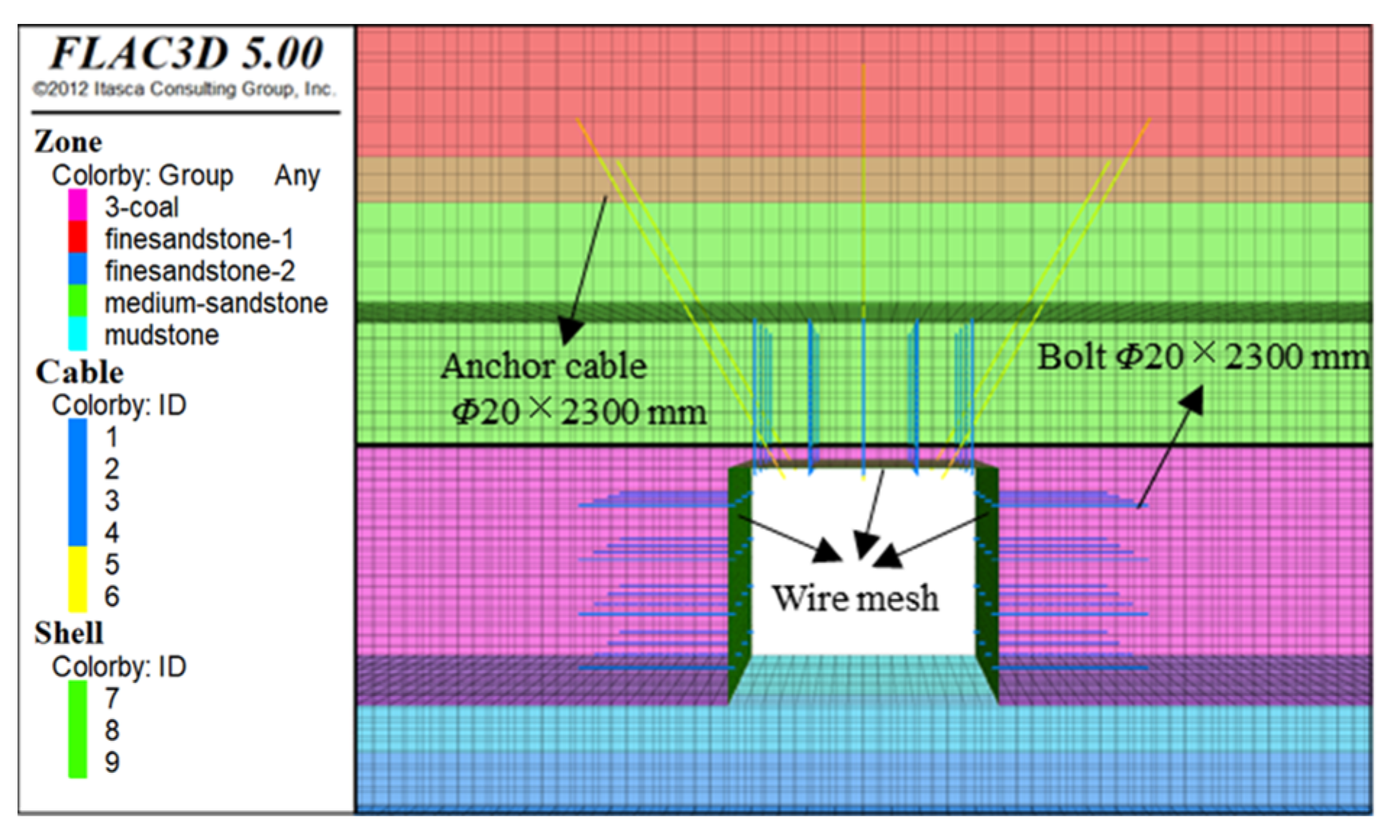
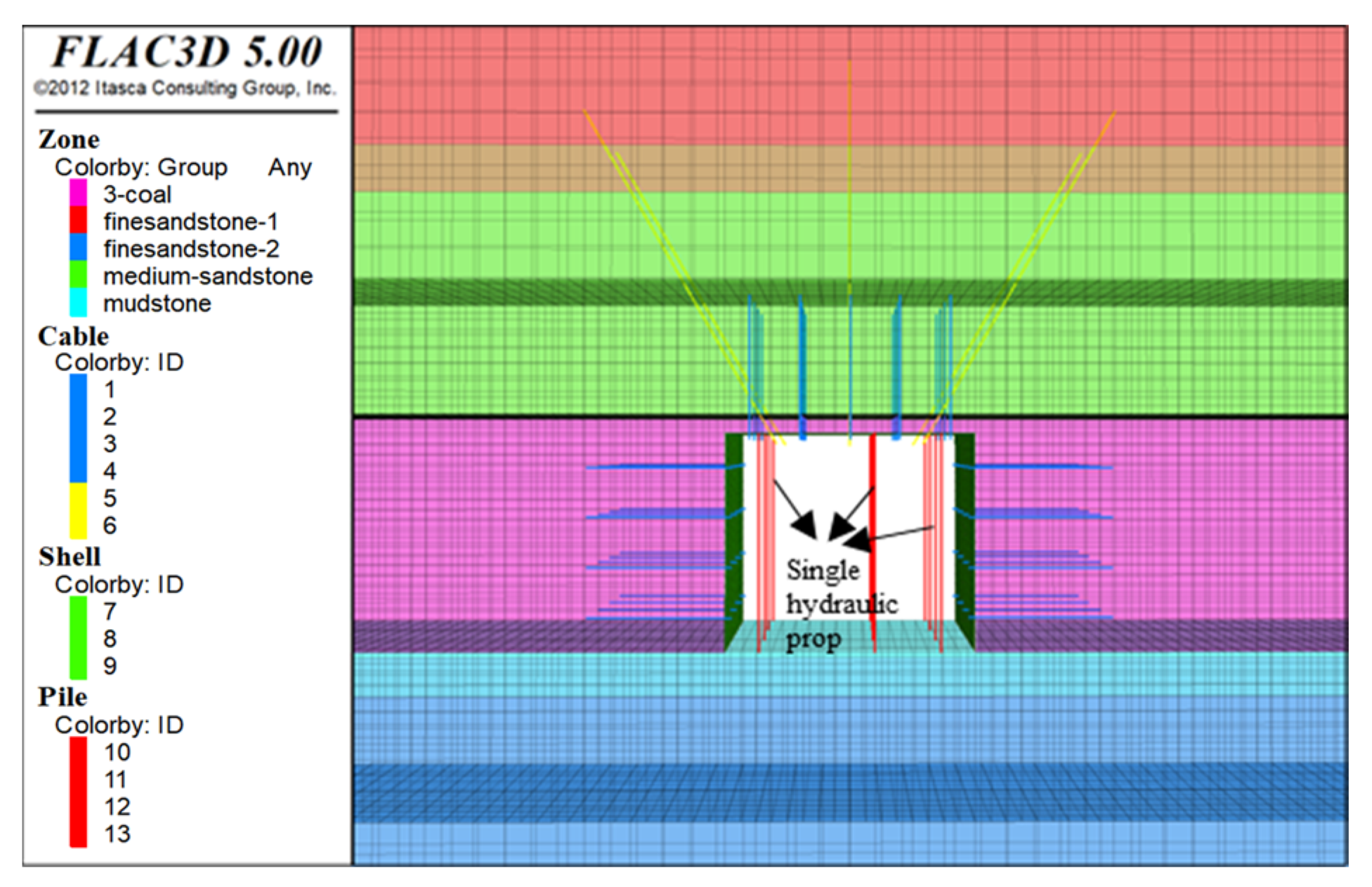
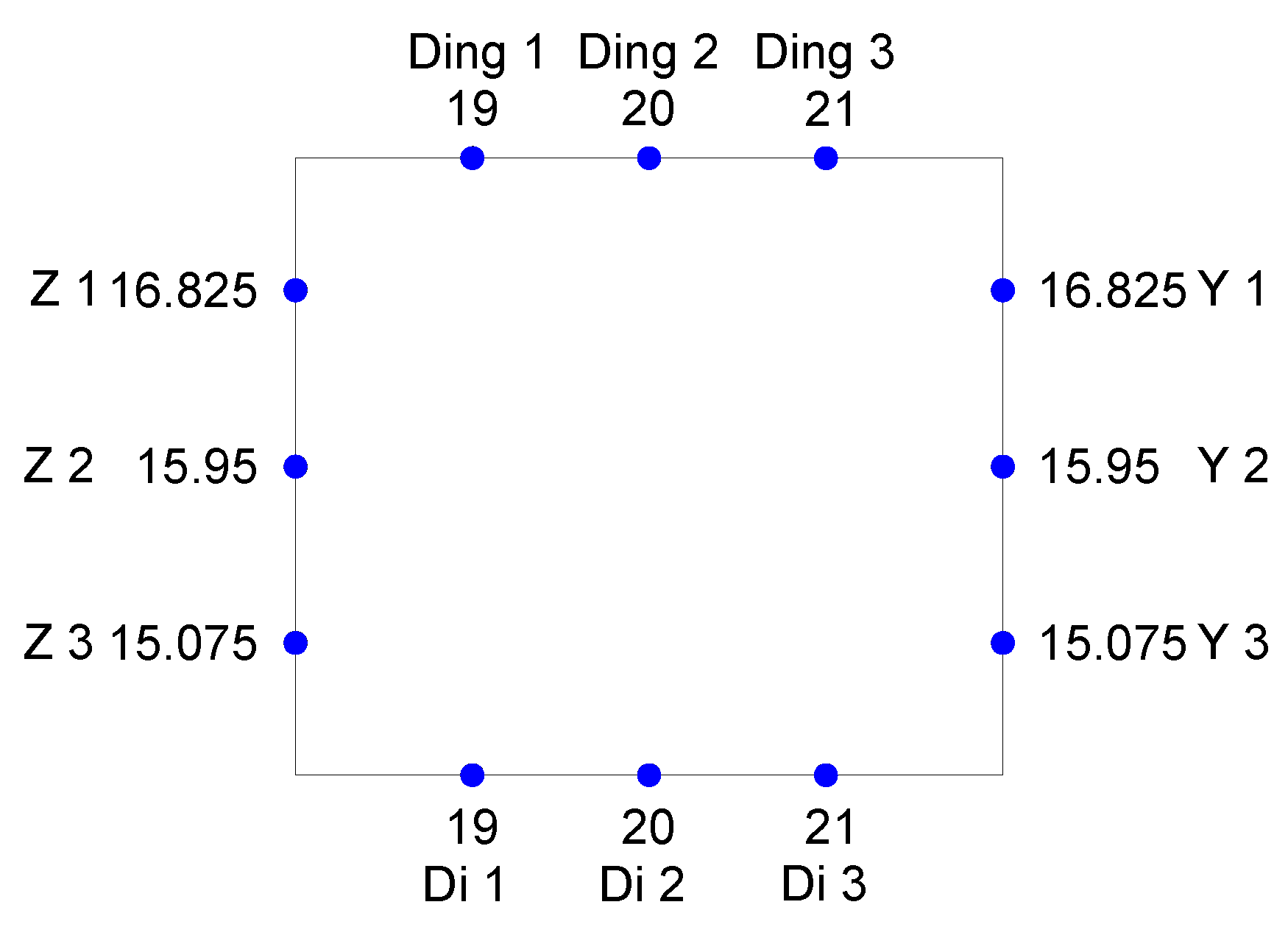
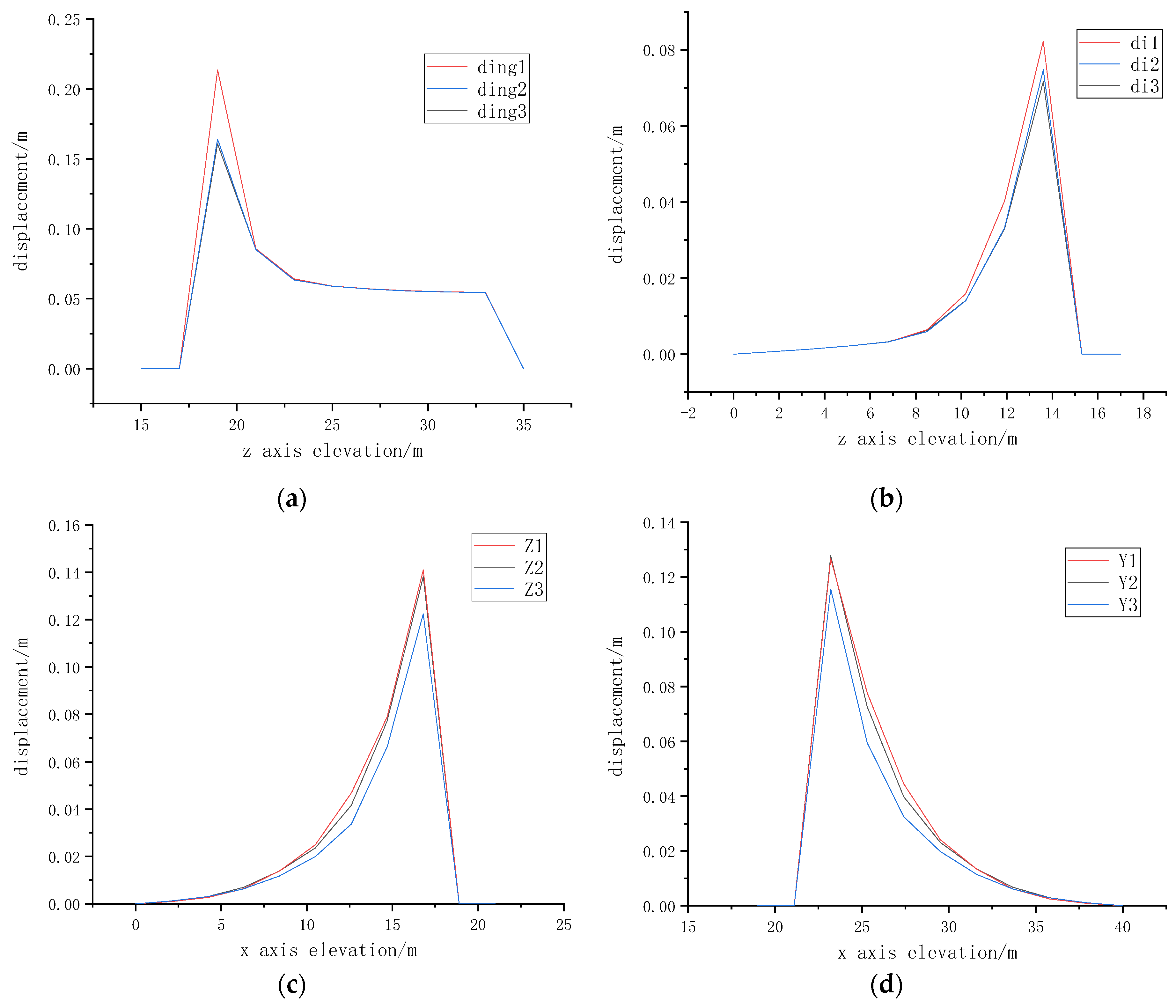
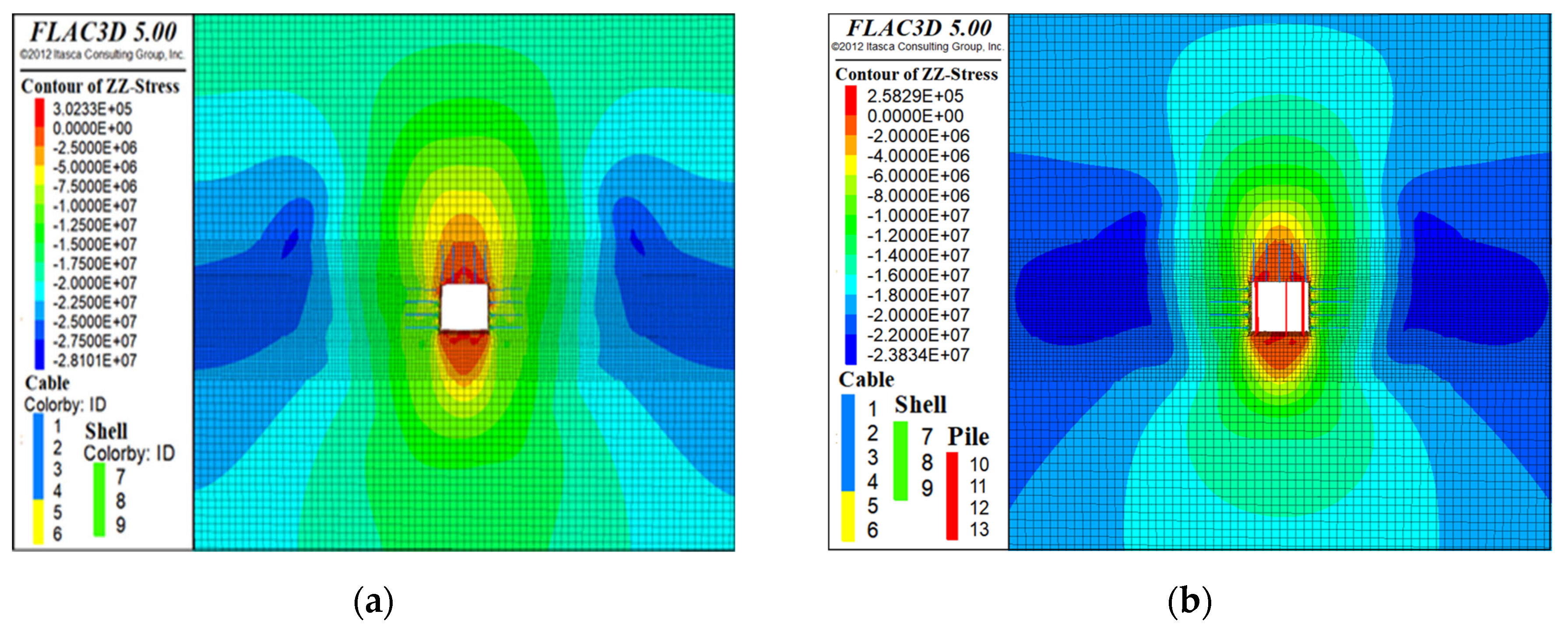

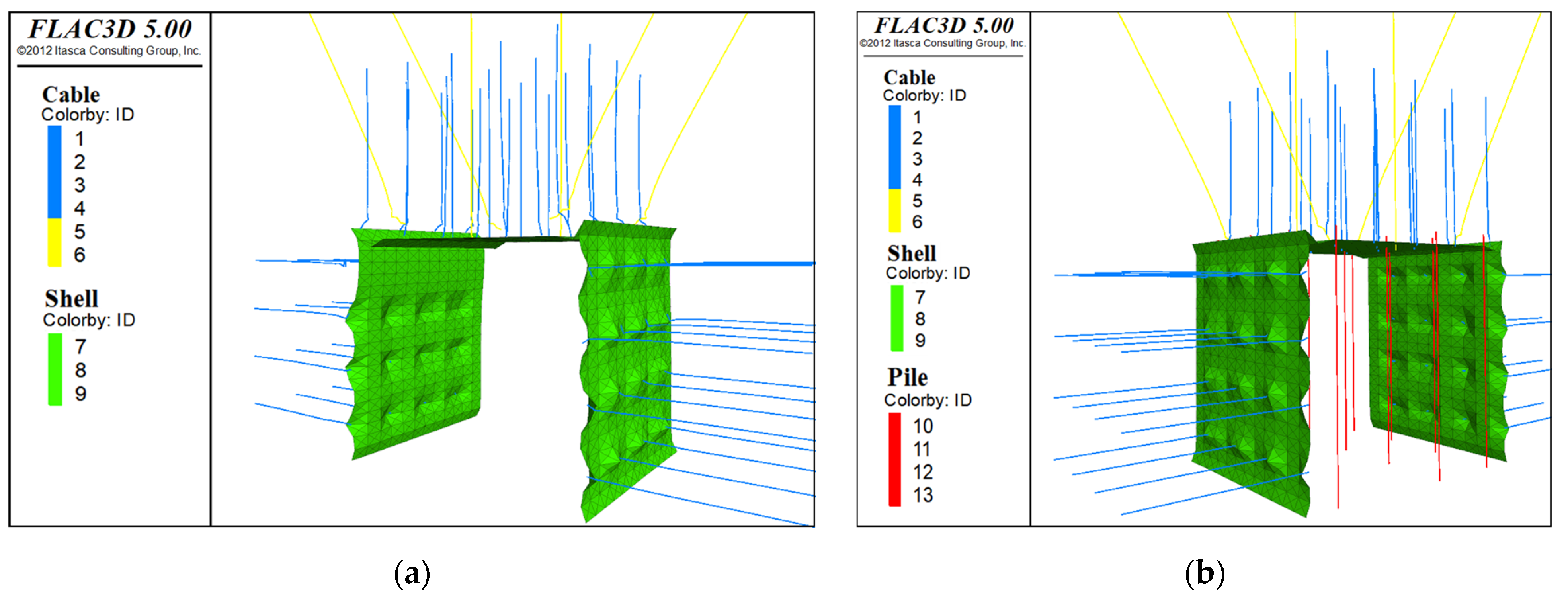
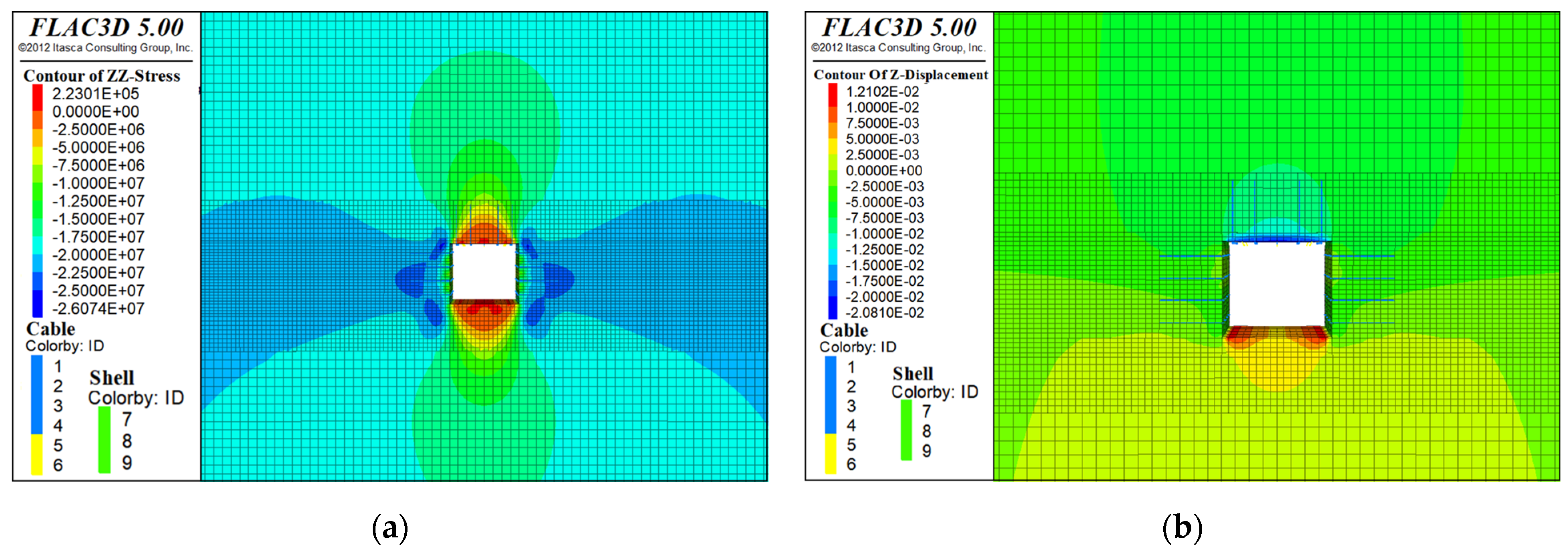
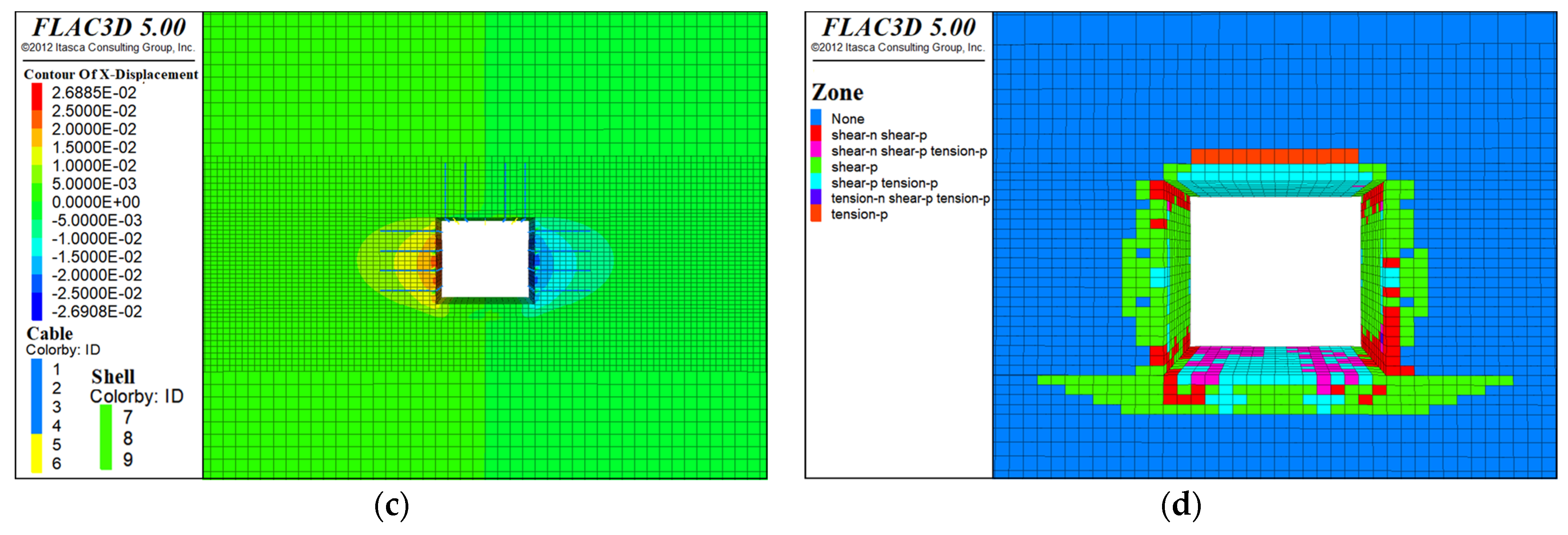
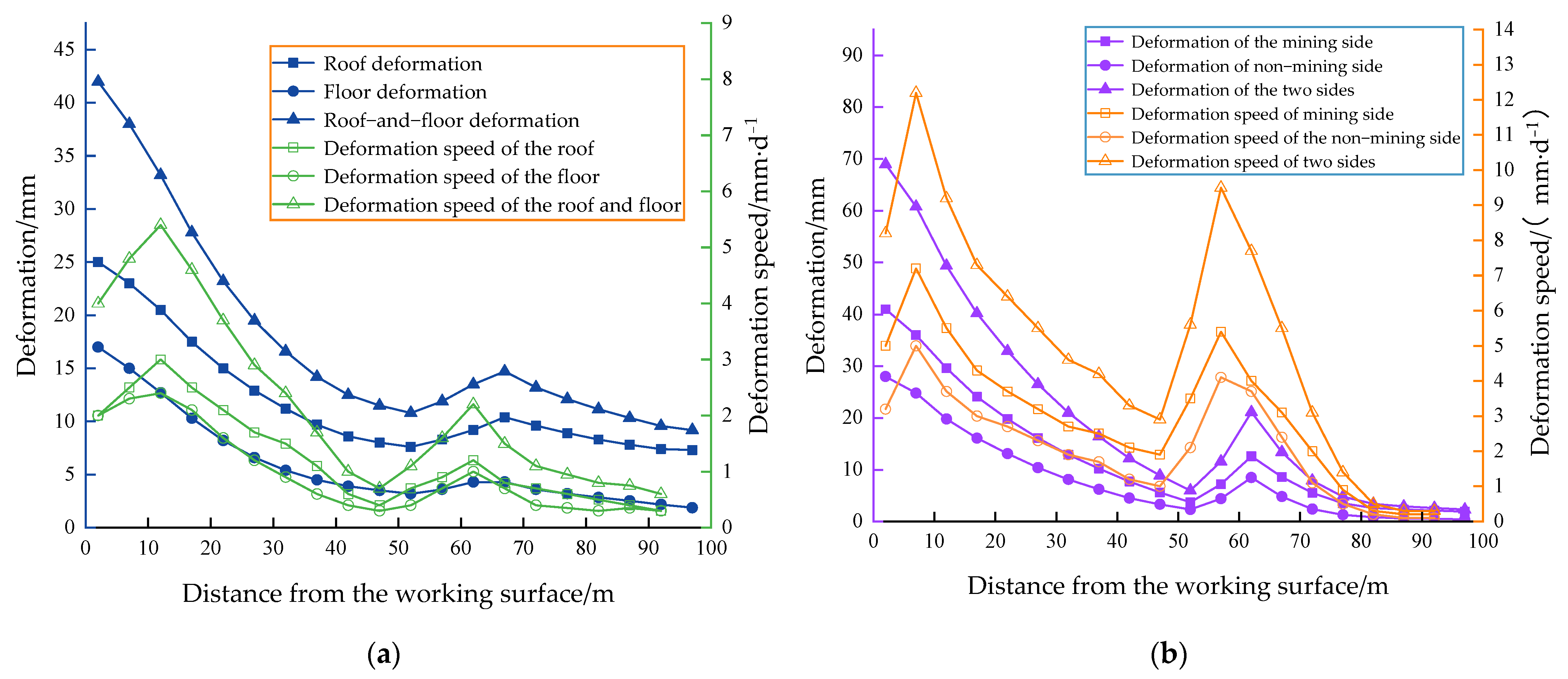

| Year | Roof | Gas | Mechatronics | Water | Transportation | Blasting | Others | Total | ||||||||
|---|---|---|---|---|---|---|---|---|---|---|---|---|---|---|---|---|
| Numbers | Death Toll | Numbers | Death Toll | Numbers | Death Toll | Numbers | Death Toll | Numbers | Death Toll | Numbers | Death Toll | Numbers | Death Toll | Numbers | Death Toll | |
| 2014 | 196 | 292 | 47 | 266 | 36 | 37 | 19 | 79 | 83 | 103 | 13 | 19 | 114 | 131 | 508 | 927 |
| 2015 | 134 | 171 | 45 | 171 | 31 | 31 | 12 | 64 | 62 | 68 | 7 | 7 | 59 | 63 | 350 | 575 |
| 2016 | 83 | 126 | 36 | 221 | 22 | 38 | 15 | 27 | 54 | 72 | 8 | 14 | 31 | 40 | 249 | 538 |
| 2017 | 73 | 86 | 31 | 132 | 20 | 22 | 12 | 18 | 32 | 42 | 8 | 8 | 43 | 67 | 219 | 375 |
| 2018 | 61 | 93 | 12 | 53 | 20 | 19 | 5 | 9 | 50 | 63 | 2 | 2 | 25 | 36 | 175 | 275 |
| 2019 | 51 | 72 | 29 | 113 | 17 | 11 | 8 | 3 | 41 | 61 | 2 | 1 | 22 | 55 | 170 | 316 |
| 2020 | 40 | 55 | 5 | 22 | 17 | 18 | 7 | 25 | 23 | 26 | 3 | 3 | 28 | 79 | 123 | 228 |
| 2021 | 25 | 53 | 7 | 25 | 13 | 13 | 3 | 28 | 20 | 20 | 1 | 1 | 21 | 26 | 90 | 166 |
| 2022 | 48 | 89 | 11 | 23 | 24 | 22 | 7 | 25 | 33 | 36 | 9 | 11 | 36 | 39 | 168 | 245 |
| Total | 711 | 1037 | 223 | 1026 | 180 | 211 | 88 | 278 | 298 | 491 | 53 | 66 | 379 | 536 | 2049 | 3645 |
| Rock Formation | Lithology | Thickness /m | Unit Weight /(N/m3) | Elastic Modulus /GPa | Poisson Ratio | Internal Friction Angle/(°) | Cohesion /MPa | Compressive Strength /MPa | Tensile Strength /MPa |
|---|---|---|---|---|---|---|---|---|---|
| Roof | fine sandstone | 12.9 | 26,400 | 10.9 | 0.25 | 38 | 10.5 | 39.07 | 1.14 |
| medium sandstone | 4.3 | 25,800 | 10.5 | 0.24 | 40 | 12.6 | 41.02 | 1.17 | |
| Coal seam 3 | Coal | 3.8 | 15,400 | 2.55 | 0.19 | 30 | 3.2 | 7.81 | 0.63 |
| Floor | mudstone | 0.7 | 23,300 | 10.13 | 0.31 | 26 | 1.3 | 17.16 | 0.82 |
| fine sandstone | 13.8 | 25,400 | 10.9 | 0.25 | 38 | 10.5 | 39.07 | 1.14 |
| Rock Formation | Lithology | Thickness /m | Unit Weight /(N/m3) | Bulk Modulus /GPa | Shear Modulus /GPa | Internal Friction Angle /(°) | Cohesion /MPa | Compressive Strength /MPa | Tensile Strength /MPa |
|---|---|---|---|---|---|---|---|---|---|
| Roof | fine sandstone | 12.9 | 26,400 | 14.47 | 8.68 | 38 | 10.5 | 39.07 | 1.14 |
| medium sandstone | 4.3 | 25,800 | 6.73 | 4.23 | 40 | 12.6 | 41.02 | 1.17 | |
| Coal seam 3 | Coal | 3.8 | 15,400 | 1.37 | 1.07 | 30 | 3.2 | 7.81 | 0.63 |
| Floor | mudstone | 0.7 | 23,300 | 8.89 | 3.87 | 26 | 1.3 | 17.16 | 0.82 |
| fine sandstone | 13.8 | 25,400 | 14.47 | 8.68 | 38 | 10.5 | 39.07 | 1.14 |
| Type | Diameter /mm | Cross Section Area /m2 × 10−3 | Elastic Modulus /GPa | Tensile Strength /MPa | Cohesive Strength /N·m−1 | Stiffness of Anchoring Agent /MN·m−2 | Friction Angle of Anchoring Agent /(°) | Peripheral Perimeter of Anchoring Agent/m × 10−3 |
|---|---|---|---|---|---|---|---|---|
| Bolt | 20 | 0.31416 | 200 | 0.15 | 100,000 | 20 | 30 | 81.68 |
| Anchor | 17.8 | 0.24885 | 195 | 0.31 | 100,000 | 20 | 30 | 74.77 |
| Type | Diameter /mm | cross section area /m2 × 10−3 | Elastic modulus /GPa | Poisson ratio | Polar moment of inertia /m4 | X-axis second moment /m4 | Z-axis second moment /m4 | |
| Single hydraulic porp | 110 | 9.5 | 210 | 0.3 | 1.438 × 10−5 | 7.19 × 10−6 | 7.19 × 10−6 | |
| Wire mesh | 5 | 0.25 | ||||||
Disclaimer/Publisher’s Note: The statements, opinions and data contained in all publications are solely those of the individual author(s) and contributor(s) and not of MDPI and/or the editor(s). MDPI and/or the editor(s) disclaim responsibility for any injury to people or property resulting from any ideas, methods, instructions or products referred to in the content. |
© 2023 by the authors. Licensee MDPI, Basel, Switzerland. This article is an open access article distributed under the terms and conditions of the Creative Commons Attribution (CC BY) license (https://creativecommons.org/licenses/by/4.0/).
Share and Cite
Guo, X.; Zheng, X.; Li, P.; Liu, C.; Wang, J.; Shahani, N.M.; Xu, W.; Li, B.; Lai, G.; Wang, Y.; et al. Reasonable Support Technology of Full-Stress Anchoring Technology of Advance Roadway: A Case Study. Processes 2023, 11, 1052. https://doi.org/10.3390/pr11041052
Guo X, Zheng X, Li P, Liu C, Wang J, Shahani NM, Xu W, Li B, Lai G, Wang Y, et al. Reasonable Support Technology of Full-Stress Anchoring Technology of Advance Roadway: A Case Study. Processes. 2023; 11(4):1052. https://doi.org/10.3390/pr11041052
Chicago/Turabian StyleGuo, Xiaowei, Xigui Zheng, Peng Li, Cancan Liu, Jiyu Wang, Niaz Muhammad Shahani, Wenjie Xu, Boyang Li, Guowei Lai, Yonghui Wang, and et al. 2023. "Reasonable Support Technology of Full-Stress Anchoring Technology of Advance Roadway: A Case Study" Processes 11, no. 4: 1052. https://doi.org/10.3390/pr11041052







